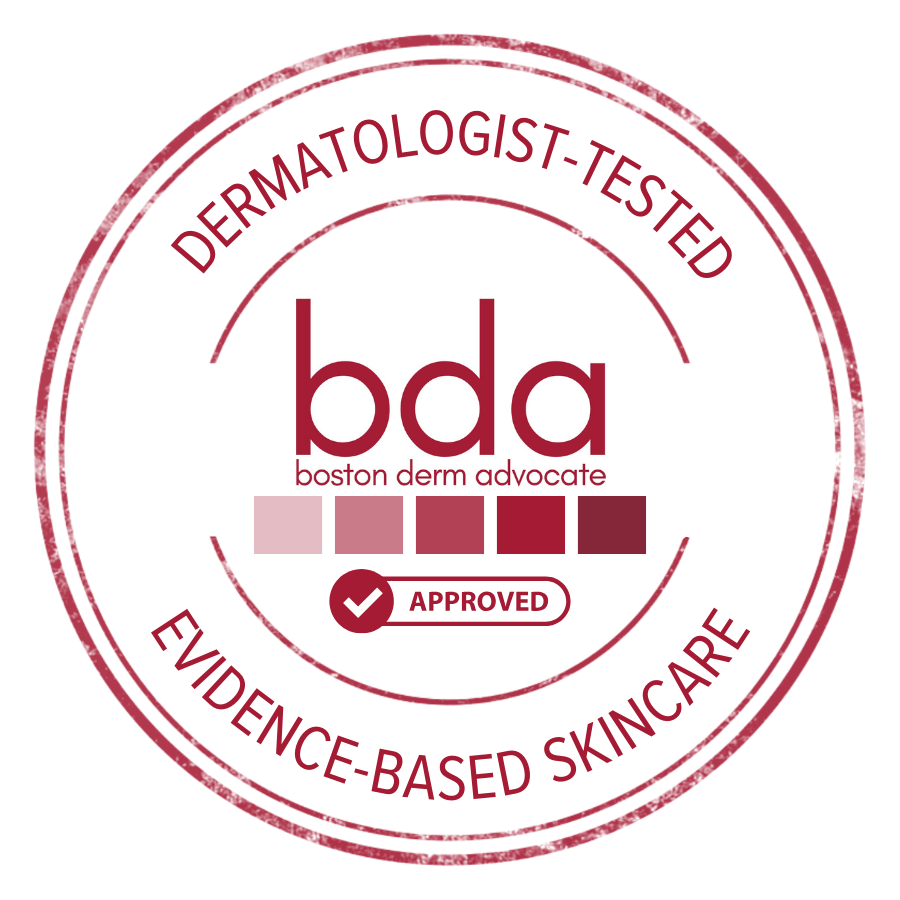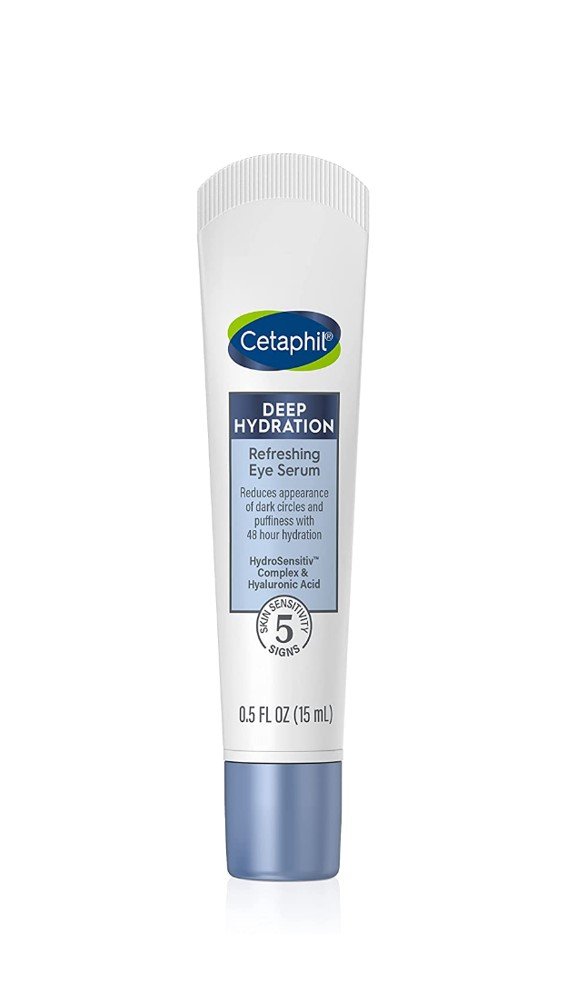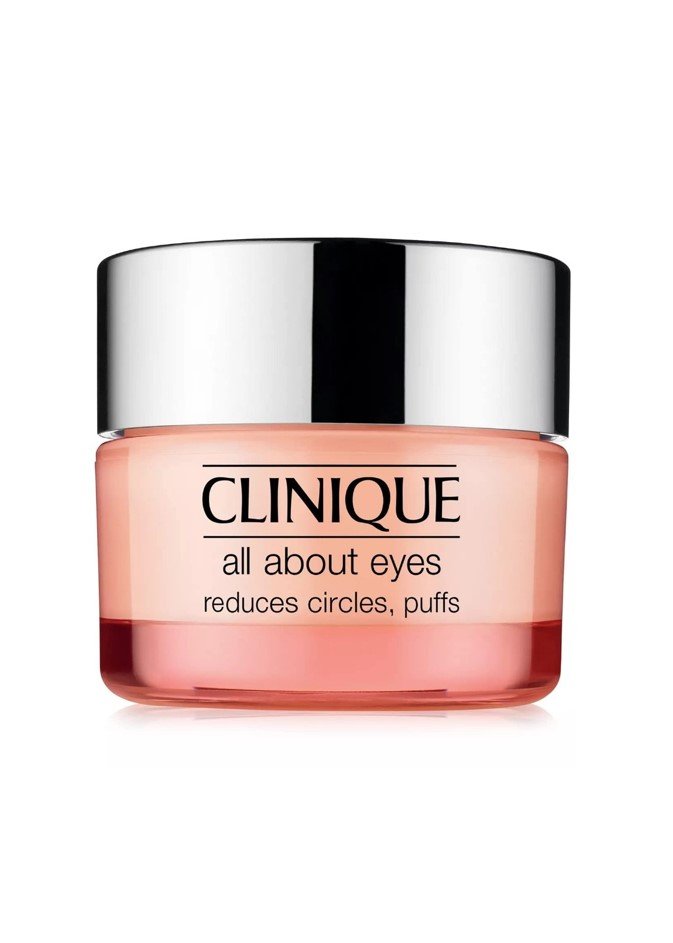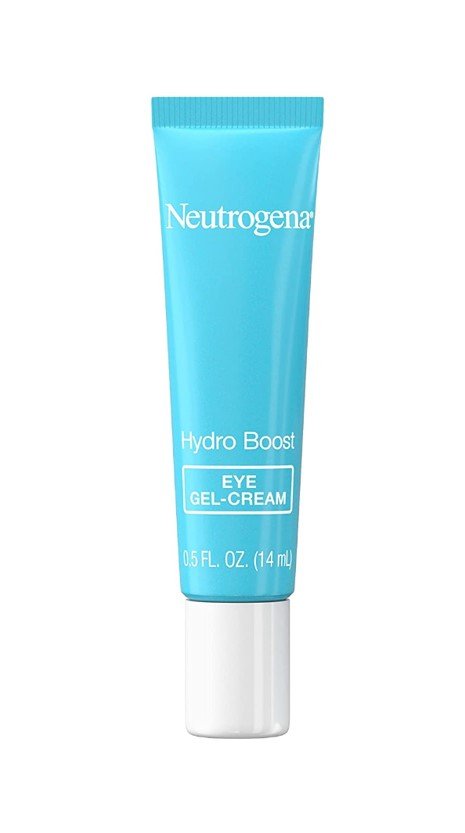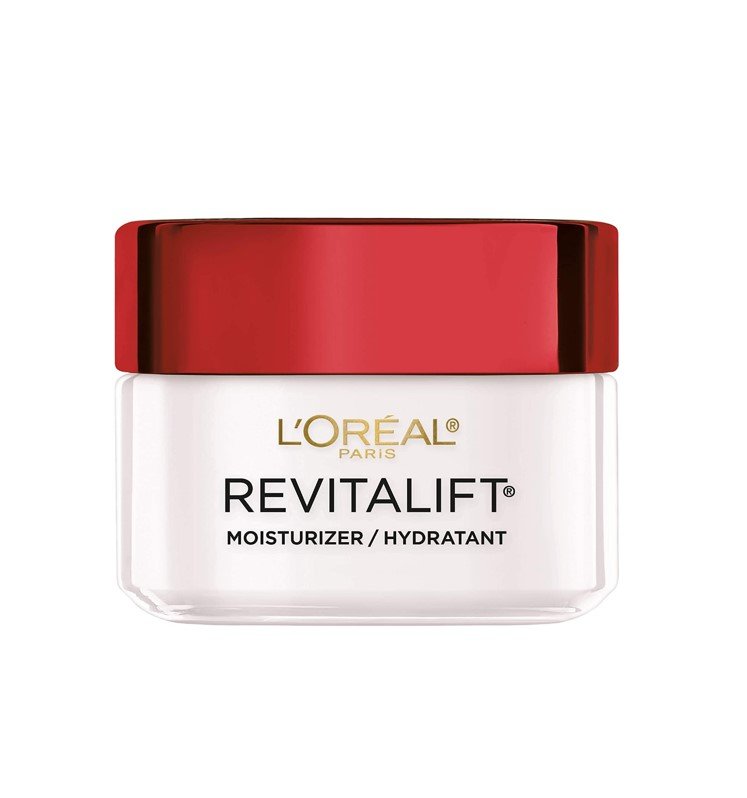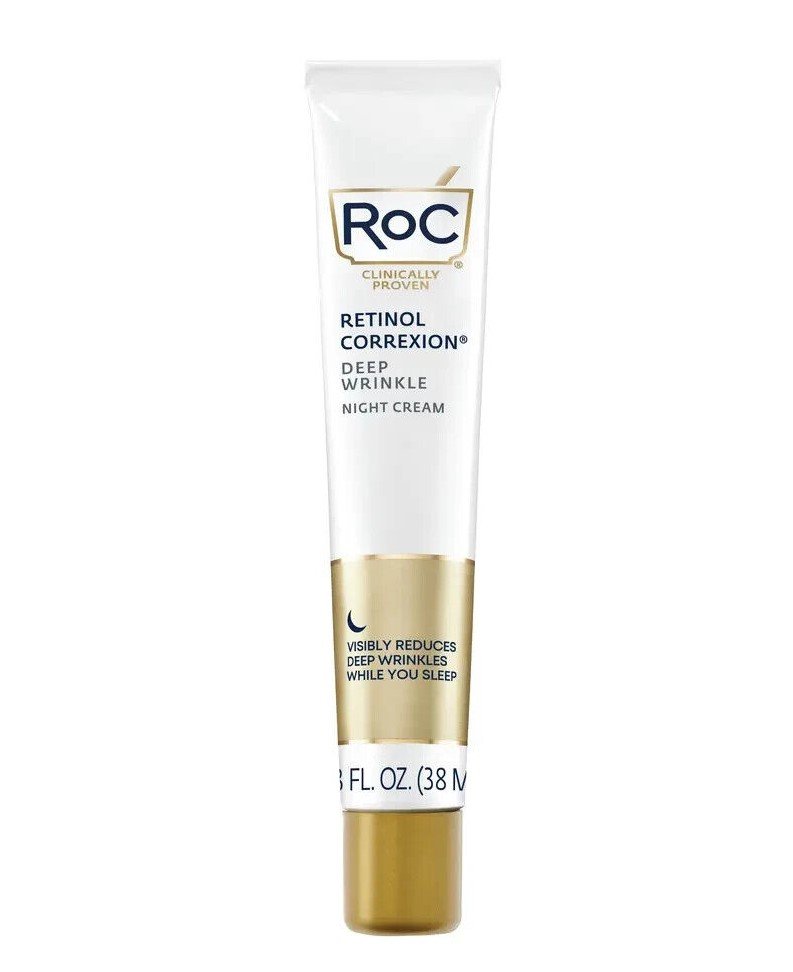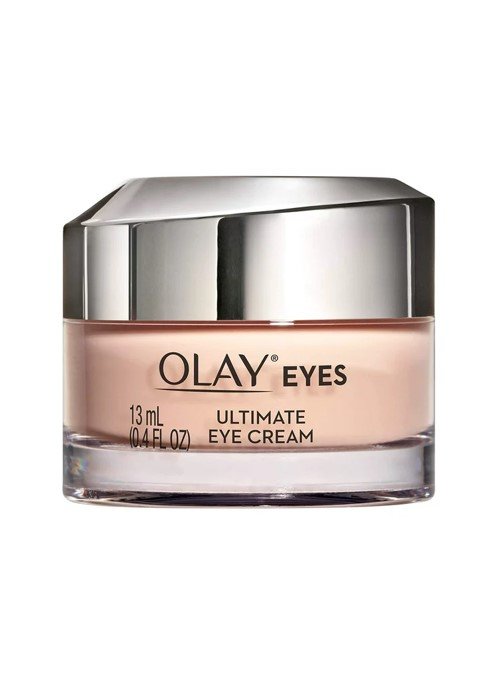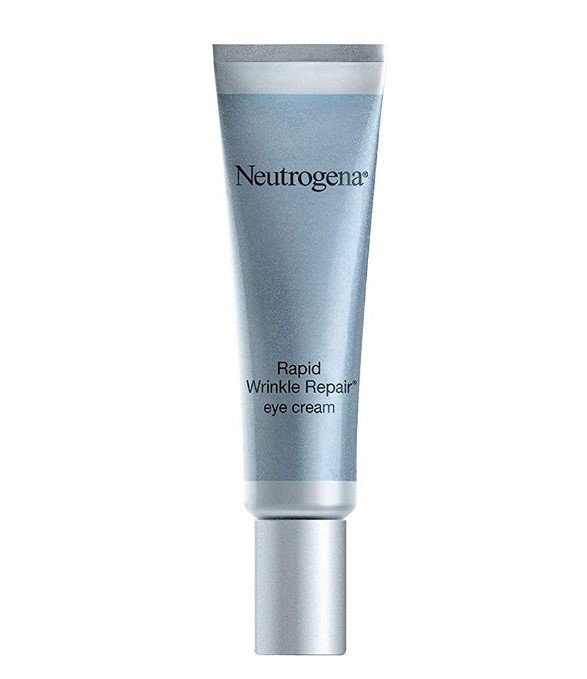The Best Dermatologist-Recommended Eye Creams for Puffiness and Dark Circles
Our Favorite Eye Creams
Best overall by the metrics
RoC Retinol Correxion
Why it’s great: Easy to apply, hydrating, smooth, and has retinol for anti-aging
Drawbacks: Less hydrating than some of the other tested products
Price per unit: $1.43 per mL, luxurious and on the higher end of cost
SkinSafe rating: A (‘A’ = top allergen free, according to skinsafeproducts.com)
Notable quotes from our dermatologists:
“This might be the perfect product, no odor, easy to apply”
“Delivers a silky, smooth, hydrating experience”
“Glides on easily but not the most optimal for hydrating”
Best overall by sentiment analysis and for hydrating effect
CeraVe Eye Repair Cream
Why it’s great: Maximally hydrating and easy to apply
Drawbacks: has no anti-aging technology such as retinol
Price per unit: $0.91 per mL, priced reasonably
SkinSafe rating: A
Notable quotes from our dermatologists:
“Offers a clean, hydrating experience”
“Fascinating product; easy to apply and feels inert”
“Definitely a top 3 product we have here”
Best budget pick
Revitalift - L'Oréal
Why it’s great: Affordable, hydrating, reduced dark circles under eyes
Drawbacks: Has fragrance. More firm and slightly harder to apply
Price per unit: $0.29 per mL, the most cost-effective product we tested
SkinSafe rating: A
Notable quotes from our dermatologists:
“Would classify this as a 7/10 overall”
“More firm than the other eye creams”
“Loved the texture and improved dark circles”
Best for prevention of under eye wrinkles
Neutrogena Rapid Wrinkle Repair Retinol Eye Cream
Why it’s great: Silky smooth consistency, hydrating, and contains retinol for anti-aging
Drawbacks: Slightly greasy and mild irritation if too close to eyes
Price per unit: $1.31 per mL, well-priced for the quality
SkinSafe rating: A
Notable quotes from our dermatologists:
“I am a FAN”
“Creamy consistency without scent or irritation”
“Moisturizing and gentle consistency, slightly oily”
Best for users with combination skin (dry, oily)
Clinique All About Eyes Cream
Why it’s great: The highest hypoallergenic rating, silky smooth application and great for both dry and oily combination skin
Drawbacks: The cost is relatively high for not having any retinol
Price per unit: $1.33 per mL; top 3 most expensive among tested products
SkinSafe rating: A+ (the highest tier of allergen free according to skinsafeproducts.com)
Notable quotes from our dermatologists:
“Rolling and soft texture, has a great feel to it”
“Glided onto my skin like butter, but not greasy”
“I want to know what this one is”
-
This guide is a response to the common concerns about dark circles, 'puffiness', 'bagginess', and fine wrinkles under the eyes. These skin issues are prevalent, and while aging and lifestyle choices contribute significantly, there's no overnight miracle cure. Prescription treatment often involves topical vitamin A derivatives, like tretinoin cream. However, many people opt for over-the-counter options due to convenience and accessibility.
The challenge lies in selecting an effective product from a vast array of options with varying price points.
This guide aims to provide a consensus recommendation, exploring popular under-eye cream treatments to help you make an informed choice. We've compiled the best eye creams to help you brighten dark circles and reduce puffiness. These creams are designed to improve the appearance of dark circles, minimize puffiness, and reduce the signs of aging around the delicate eye area. Whether you're looking for a retinol eye cream, a brightening eye cream, or an affordable eye cream, we've got you covered.
-
Before we go into our methods, we should preface that while 10 weeks is a substantial amount of time, it may not be enough to see differences in mild wrinkles around the eyes. Therefore, we focused more on the side effects, tolerability, ease of application, and chemical composition of the creams for our metric system.
Selection phase
We searched the keywords ‘eye cream’ through a keyword tool and filtered similar and related keywords in decreasing order by the approximate monthly google search volume.
We then excluded search results that contained a brand name.
Next, we selected the top ten remaining keyword phrases (e.g. best eye cream for dark circles; retinol eye cream; best drugstore eye cream) and queried each phrase on Amazon.com.
We excluded exclusively sponsored (paid advertisement that would not have otherwise appeared in the top search) products and further included only products qualifying for Amazon Prime and had at least 4/5 stars on customer reviews.
We then recorded the top ten products listed on Amazon for any keyword or phrase.
This process was repeated for each of the ten different keyword phrases, generating a total of 100 products, which we ranked in decreasing order by the number of times each product appeared in the search results.
Finally, we selected only the top ten most commonly appearing products in this list and purchased them for our experiment.
Testing phase
We spent 10 weeks testing the most highly searched and recommended products
Our testing team consisted of 4 dermatology residents located in Boston, Massachusetts. There was variation in skin type, skin tone, and ethnicity.
Our skin profiles are as follows:
Balanced; Medium with yellow undertones
Combination; Fair with warm undertones
Dry; Dark brown
Dry-sensitive; Fair with pink undertones
All subjects endorsed having moderate puffiness under the eyes; one of the subjects was still ‘on call’ covering overnight and weekend emergencies at nearby hospitals while the other was more well-rested.
We performed blind testing for each product. Prior to the study, each product was separated into opaque travel size containers, labeled one through ten (a reference list with the corresponding product names was held by an impartial member who did not undergo product testing), and distributed to the various test subjects.
Over the course of 10 weeks, subjects were to apply eye cream nightly Monday through Friday, making note of their experience immediately and 12 hours after use.
A washout period of 2 days (Saturday and Sunday) when switching different products to avoid any spillover effect.
Special attention was given towards hydrating sensation, odor, burning sensation, and dryness.
-
We are a group of dermatology residents and attending physicians based in Boston, MA. Our team of Harvard-trained dermatologists is demystifying the cosmeceutical industry by offering unbiased, scientifically supported reviews of skincare products.
An overview of our core team:
Dr. David Li is a recent graduate from the Harvard Combined Dermatology Residency Program. He is now in private practice as a procedural dermatologist in Downtown Boston where he offers skin cancer screenings, skin cancer surgeries, and laser and cosmetic rejuvenation. He has published more than 25 peer-reviewed research articles, is active as an advisor for multiple early-stage companies, and is an angel investor in the healthcare technology space. In his free time, he enjoys running to stay fit, cooking, and playing with his Australian shepherd, Laika.
Dr. Nelson Ugwu is a dermatology resident at the Harvard Combined Dermatology Residency Program. His clinical interests include general dermatology, skin of color and skin cancer prevention. Nelson has discovered mutations that cause skin diseases, as well as new treatments for skin conditions. In his free time, Nelson enjoys weightlifting, playing soccer and trying new recipes.
Dr. Arash Mostaghimi is an associate professor of dermatology at Harvard Medical School, the director of the inpatient dermatology consult service, and co-director of the Complex Medical Dermatology Fellowship at Brigham & Women’s Hospital. He is also the principal investigator of the Mostaghimi Lab, where he leads a diverse group of physicians and researchers to study alopecia areata, an autoimmune hair loss condition which afflicts his daughter. In addition to his research, he is an advisor to multiple companies and is an associate editor of JAMA Dermatology.
Contributors:
Dr. Olivia Davies is a dermatology resident at the Harvard Combined Dermatology Residency Program. Her dermatology interests include inpatient dermatology, complex-medical dermatology and medical education. She enjoys exploring the intersection between medicine and media — with past experiences that include rotating through the ABC News Medical Unit, publishing a graphic perspective in the New England Journal, and serving as a poetry editor for Intima: A Journal of Narrative Medicine. When she’s not learning or working, she can be found making cheese plates for friends, sipping a warm cup of coffee, or solving the newest NYT crossword puzzle.
Dr. Jacqueline Stevens is currently a resident in the Harvard Combined Dermatology Program. She completed her undergraduate studies and MD-PhD at the University of Virginia with a PhD in microbiology, immunology, and infectious disease. Jacqueline has interest in cutaneous oncology, melanoma, and dermatologic surgery. She has published work on the basic science of inflammation at skin barriers, dermatologic diseases, and systems used to classify squamous cell skin cancer. In her free time, she enjoys skiing, hanging with her rescue pup, and the outdoors.
-
Several factors contribute to under-eye bags, puffiness, and wrinkles. As we age, our skin's collagen, responsible for elasticity, becomes damaged due to UV radiation, smoking, and natural aging. This damage, coupled with gravity's effect, leads to wrinkles and skin sagging, especially noticeable under the eyes. These are some of the major causes:
Anatomical location: The skin in this area is thin and can easily collect fluid, contributing to under-eye discoloration and swelling.
Lifestyle factors: These include high salt intake, sun exposure, smoking, and poor sleep hygiene. Interestingly enough, there is also evidence suggesting repetitive motions such as excessive smiling with the eyes can also exacerbate wrinkles around the eyes over time.
Genetics: We have noticed that wrinkles around the eyes tend to run in families.
Understanding these causes is crucial in addressing these skin concerns effectively. It's best to look for eye creams that target these specific issues. The ideal eye creams for the long term are those that contain ingredients like retinol, which help with wrinkle prevention. These creams should also contain hydrating properties, which work to improve the skin under the eye, brighten the eye area, and reduce the appearance of dark circles and minimize fine lines.
-
While under-eye puffiness and sagging don't necessarily need treatment, many people seek solutions due to cosmetic concerns.
Biological correlate: Over time, excess swelling in this region may stretch the thin dermis under the eyes, affecting collagen integrity and leading to premature aging and wrinkles. For this reason, modifiable lifestyle behaviors can prevent or minimize these issues, emphasizing the importance of a health-conscious lifestyle.
While dark circles are usually temporary, wrinkles and sagging skin around the eyes can remain for the long term and require more invasive procedures (e.g. botox, lasers, microneedling, plastic surgery) to treat. Therefore, you may want to consider adding a preventative eye cream to avoid this outcome and maintain the health and appearance of your skin.
-
Eye creams play a crucial role in skincare routines. They're designed to address specific skin concerns around the delicate eye area, such as dark circles, puffiness, and wrinkles. Whether it's a firming eye cream, a brightening dark circle eye cream, or a peptide eye gel, the right product can make a significant difference. The best eye creams are those that effectively address your specific skin concerns and improve the overall appearance of your under-eye area.
Eye creams can be formulated with many different ingredients; here are the ones we recommend:
retinol (good data)
hyaluronic acid (good data)
caffeine (moderate data)
ceramides (good data)
-
There are many misconceptions about many different eye creams. Some believe they are just overpriced moisturizers, while others think they can magically erase all signs of aging.
The truth lies somewhere in between. While eye creams are not miracle workers, they are formulated with specific ingredients targeted to address the unique concerns of the skin around the eyes.
They are an essential part of a comprehensive skincare routine, not a replacement for healthy lifestyle habits. Not all eye creams are created equal. The best eye creams are those that are carefully formulated to target specific issues such as dark circles, puffiness, and signs of aging. These creams contain potent ingredients like retinol, peptides, and caffeine, which are known for their ability to improve the appearance of the delicate eye area.
-
Eye creams come in various types, each designed to address a specific concern.
Hydrating eye creams are packed with moisturizing ingredients like hyaluronic acid and ceramides.
Eye creams for dark circles often contain ingredients like caffeine and vitamin C.
Anti-aging and anti-wrinkle eye creams may include retinol or peptides.
Understanding these types can help you choose the right product for your needs. For instance, if you're looking to reduce dark circles and puffiness, you might want to consider a brightening eye cream that targets these issues.
-
When buying eye creams, consider your skin type, specific skin concerns, and the ingredients in the product.
For sensitive skin, look for hypoallergenic formulations and check out the ratings tested by SkinSafe products.
For mature skin, consider eye creams that contain retinol which is known to be an anti-wrinkle agent.
If dark circles are your primary concern, opt for creams with light-reflecting properties or skin-brightening ingredients. Always check the ingredient list to ensure the product doesn't contain anything you're allergic to.
Also, lots of marketing use the term “natural”. Keep in mind that “natural” ingredients can be beneficial, but natural doesn't always mean better or safer.
-
Common mistakes
Using eye creams seems straightforward, but common mistakes can hinder their effectiveness.
One of the most common mistakes is using too much product. A pea-sized amount is usually enough for both eyes.
Another mistake is applying the cream too close to your eyes, which can lead to irritation. It's best to apply the cream on the orbital bone, around the eye socket.
Lastly, remember that consistency is key. Regular use is necessary to see results.
Avoid these common pitfalls to maximize the benefits of your eye cream.
Step by step application instruction
To get the most out of your eye cream, it's important to use it correctly. Here are steps that we recommend:
Apply the cream twice a day underneath the eye, once in the morning and once at night.
Use your ring finger to gently pat the cream around the eye area, being careful not to pull or tug at the skin.
Use the edge of your finger to remove any cream near the margin of the eyelid to avoid irritation.
Regular use of eye cream can help improve the appearance of the skin around the eyes, making it look brighter and more youthful.
-
Clinique All About Eyes Cream
RoC Retinol Correxion
LilyAna Naturals Eye Cream
Olay Ultimate Eye Cream
Revitalift - loreal
CeraVe Eye Repair Cream
CeraVe Eye Cream with Caffeine
Neutrogena Rapid Wrinkle Repair Retinol Eye Cream Dark Circles
Neutrogena Hydroboost Eye Cream
Cetaphil Deep Hydration Eye Serum
-
What causes puffiness and dark circles under the eyes?
Dark circles can result from a variety of factors, including age, poor sleep, dehydration, and genetics.
How do eye creams help improve the appearance of dark under-eye circles?
Eye creams often contain ingredients such as retinol, caffeine, and vitamin C, which work to reduce the visibility of dark circles, minimize puffiness, and improve skin texture.
What should I look for in an eye cream for dark circles?
Choose eye creams with ingredients known for their skin revitalizing properties like caffeine, retinol, hyaluronic acid, and peptides. These elements target dark circles, reduce puffiness, and boost skin health.
Why is the eye area so delicate?
The skin around the eyes is thinner than the rest of the face, making it more susceptible to signs of aging like dark circles, wrinkles, and puffiness.
Does an eye cream with caffeine work?
There is moderately suggestive data to show that caffeine may work as an antioxidant and vasoconstrictant (tightens blood vessels) and can help tighten the skin, reduce puffiness and banish dark circles under the eyes.
Why does an eye cream contain retinol?
Retinol boosts skin's collagen production, helping to improve skin elasticity, reduce fine lines and wrinkles, and fade dark spots.
Can dark circles be reduced over time?
Yes, with consistent use of the right eye treatments and lifestyle modification, you can improve the appearance of dark circles over time. Ingredients such as niacinamide and kojic acid may also be helpful.
What is an eye serum?
An eye serum is a lightweight, concentrated product designed to deliver powerful ingredients directly to the skin around the eyes. It can target concerns such as dark circles, puffiness, and wrinkles.
Can an eye cream minimize dark circles?
Yes, many eye creams are designed to minimize the appearance of dark circles by hydrating and brightening the under-eye area.
How does an eye product target dark circles and under-eye puffiness?
Eye products contain ingredients that can help to brighten the under-eye area, reduce puffiness, and boost skin elasticity.
What causes dark spots around the eye area?
Dark spots can be caused by aging, sun damage, or hyperpigmentation.
Are there different eye creams for different skin types?
Yes, different eye creams are formulated to address specific skin concerns and types. Some are designed for sensitive skin, others target aging skin, while others are meant for dry or oily skin.
-
Mukherjee S, Date A, Patravale V, Korting HC, Roeder A, Weindl G. Retinoids in the treatment of skin aging: an overview of clinical efficacy and safety. Clin Interv Aging. 2006;1(4):327-48. doi: 10.2147/ciia.2006.1.4.327. PMID: 18046911; PMCID: PMC2699641.
https://www.aad.org/public/cosmetic/wrinkles
